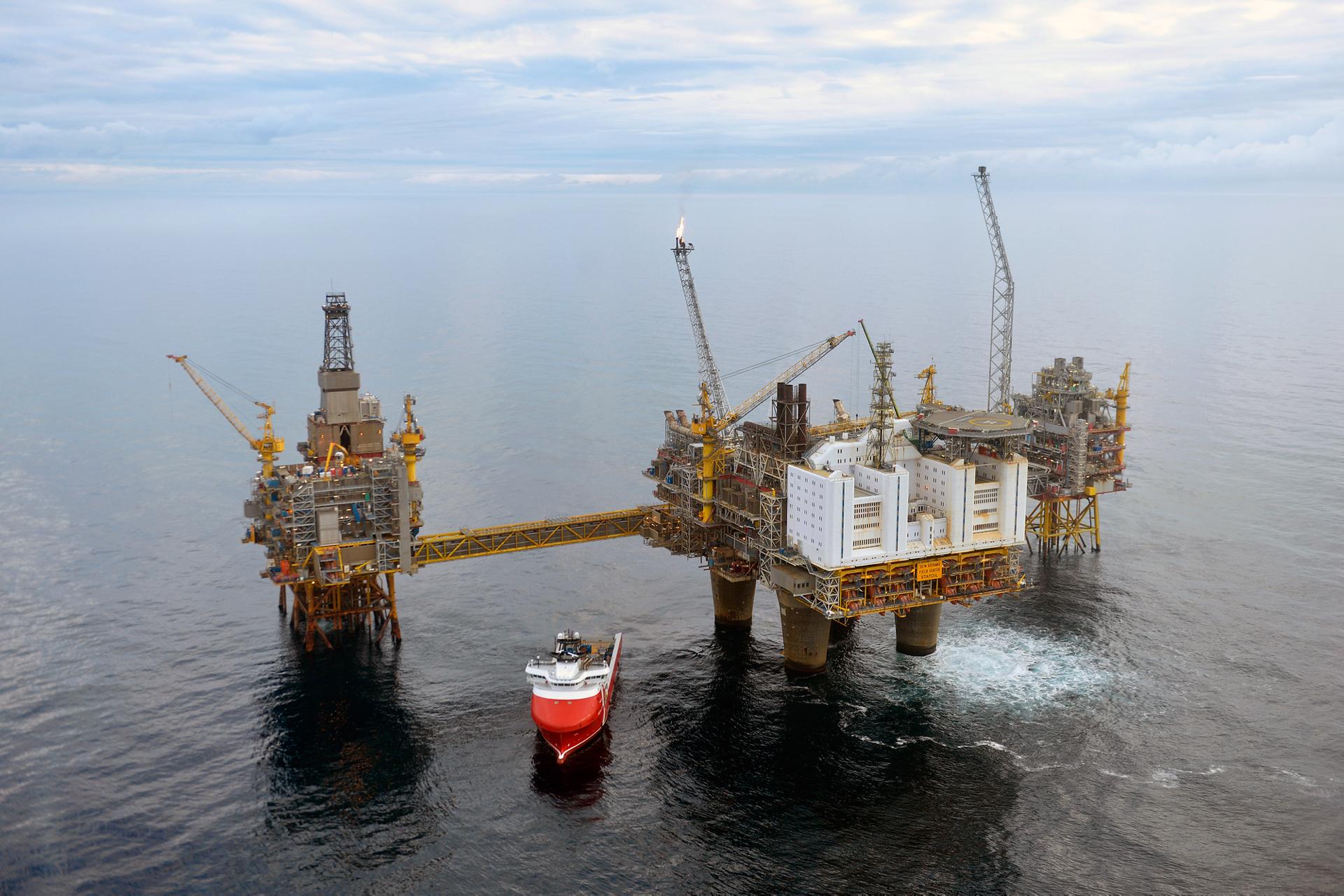PRODUCTION FROM THE FIELD
Source: Norwegian Offshore Directorate
Print illustration Download data PRODUCTION FROM THE FIELD Download PDF Download as image (PNG)
High Contrast Mode
Development
Oseberg is a field in the northern part of the North Sea. The water depth is 100 metres. Oseberg was discovered in 1979, and the plan for development and operation (PDO) was approved in 1984. The field was developed in multiple phases and the production started in 1988. The Oseberg Field Centre in the south originally consisted of two facilities: the process and accommodation facility Oseberg A and the drilling and water injection facility Oseberg B. A PDO for Oseberg C was approved in 1988 and included an integrated production, drilling and quarters facility (PDQ) in the northern part of the field. A PDO for the gas phase was approved in 1996 and included a facility for gas processing, Oseberg D. A PDO for the western flank, Vestflanken, was approved in 2003 and included a subsea template tied-back to Oseberg B. A PDO for Oseberg Delta was approved in 2005 and included a subsea template tied-back to Oseberg D. A PDO for Oseberg Delta II was approved in 2013 and included two subsea templates tied-back to the Oseberg Field Centre. A PDO for Oseberg Vestflanken II was approved in 2016 and included an unmanned wellhead platform (UWP), Oseberg H, and new wells from the existing G4 template on the western flank. A PDO for Oseberg Field Centre low pressure gas production and power from shore was approved in 2022. The Oseberg Øst, Oseberg Sør and Tune fields are tied to the Oseberg Field Centre.Reservoir
Oseberg produces oil and gas from sandstone of Middle Jurassic age in the Brent Group. The main reservoirs are in the Oseberg and Tarbert Formations, but there is also production from the Etive and Ness Formations. The reservoirs are at depths of 2300-2700 metres and have generally good quality. The field is divided into several structures. The satellite structures west of the main structure also produce from the Statfjord Group and Cook Formation.Recovery strategy
The Oseberg field is produced by pressure depletion, as well as pressure maintenance using gas and water injection in some structures. Massive upflank gas injection in the main field has provided excellent oil displacement, and a large gas cap has developed. Injection gas was previously imported from Troll Øst. Gas blowdown has gradually started in main parts of the field, while other parts are maintaining injection.Transport
The oil is transported through the Oseberg Transport System (OTS) to the Sture terminal. The gas is transported via the Oseberg Gas Transport (OGT) pipeline and the new Heimdal bypass on the seabed to the Statpipe-system and further to continental Europe, as well as via the Vesterled pipeline to the UK.Status
The strategy for the main Oseberg reservoirs is to balance oil production with increasing gas offtake. To increase oil recovery from the northern part of the field, the inlet pressure on the Oseberg C facility has been reduced. New production wells are continuously being drilled to enhance oil recovery. Gas blowdown from the Oseberg Delta structure started in 2022. The first dedicated gas production wells were drilled in 2023.ACCRUED INVESTMENTS IN NOMINAL NOK
Source: Norwegian Offshore Directorate
Print illustration Download data ACCRUED INVESTMENTS IN NOMINAL NOK Download PDF Download as image (PNG)
High Contrast Mode
NORWEGIAN OFFSHORE DIRECTORATE'S CURRENT RESOURCE ESTIMATES
All numbers in mill. Sm3 o.e.
Print table Download data NORWEGIAN OFFSHORE DIRECTORATE'S CURRENT RESOURCE ESTIMATES
High Contrast Mode
Visit the Norwegian Offshore Directorate's fact pages for more information
